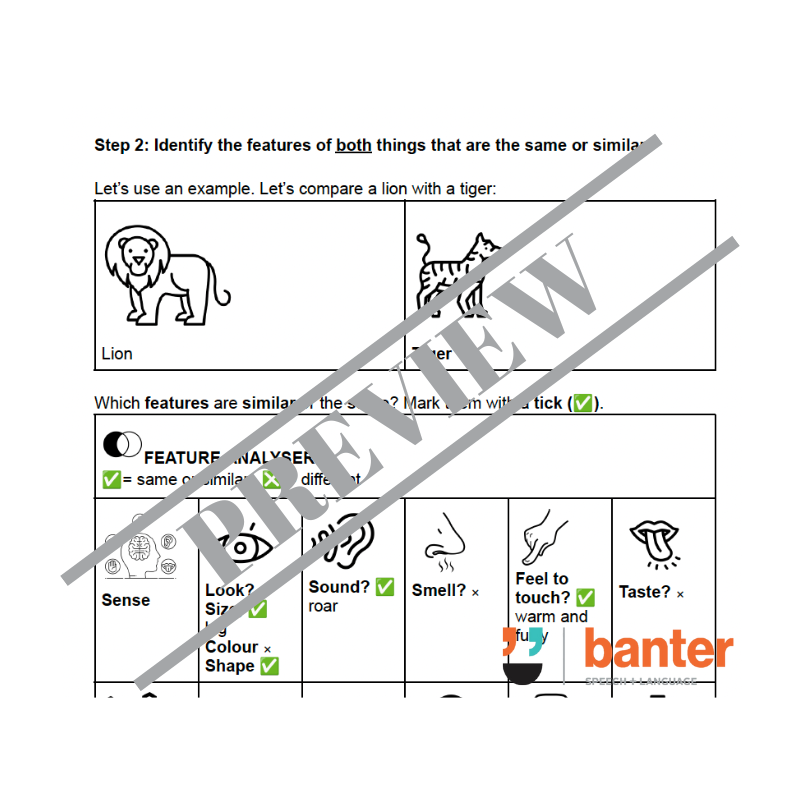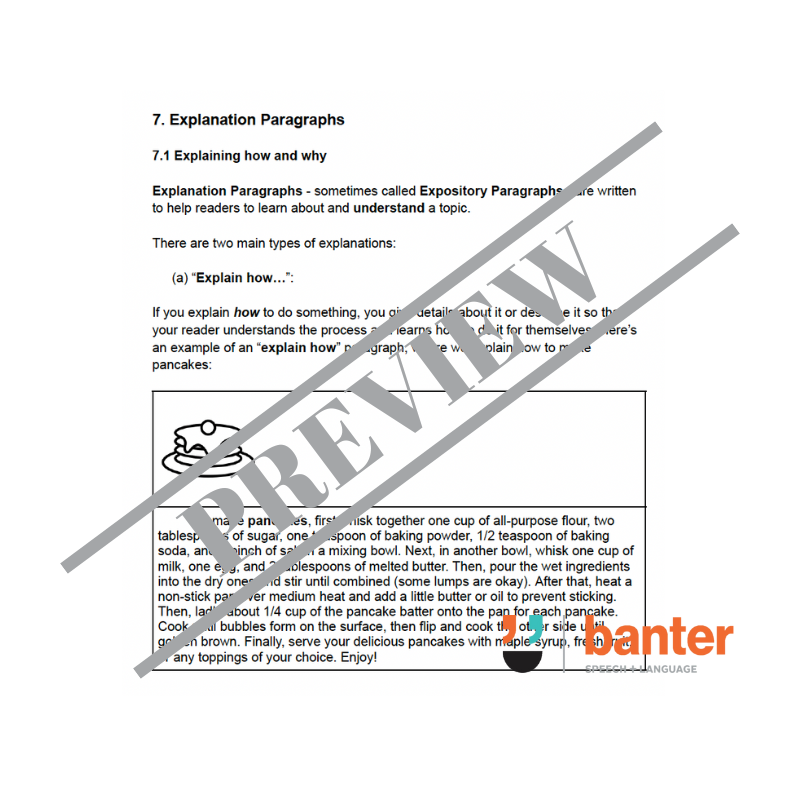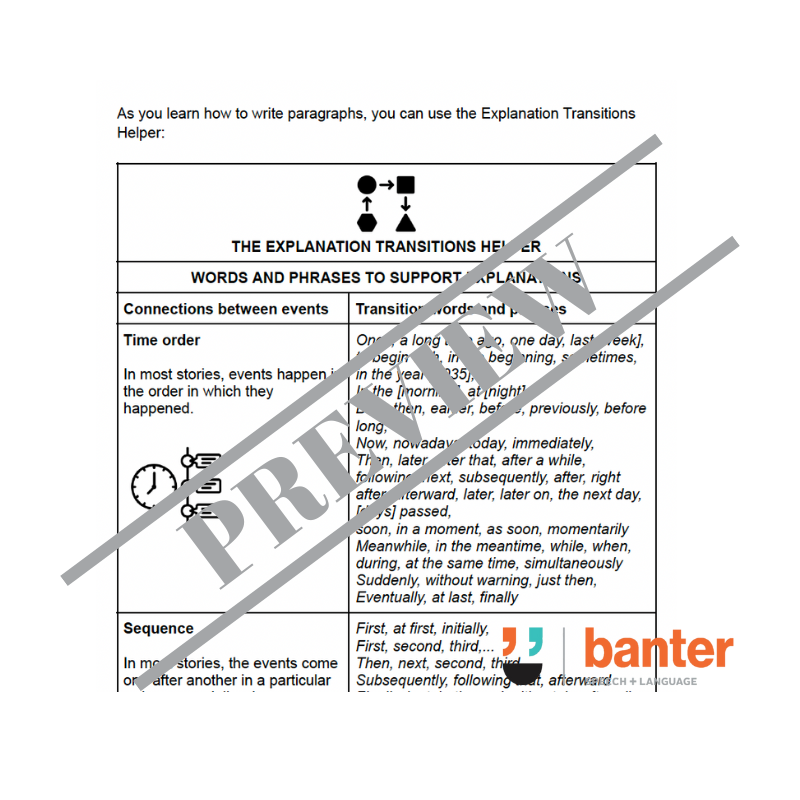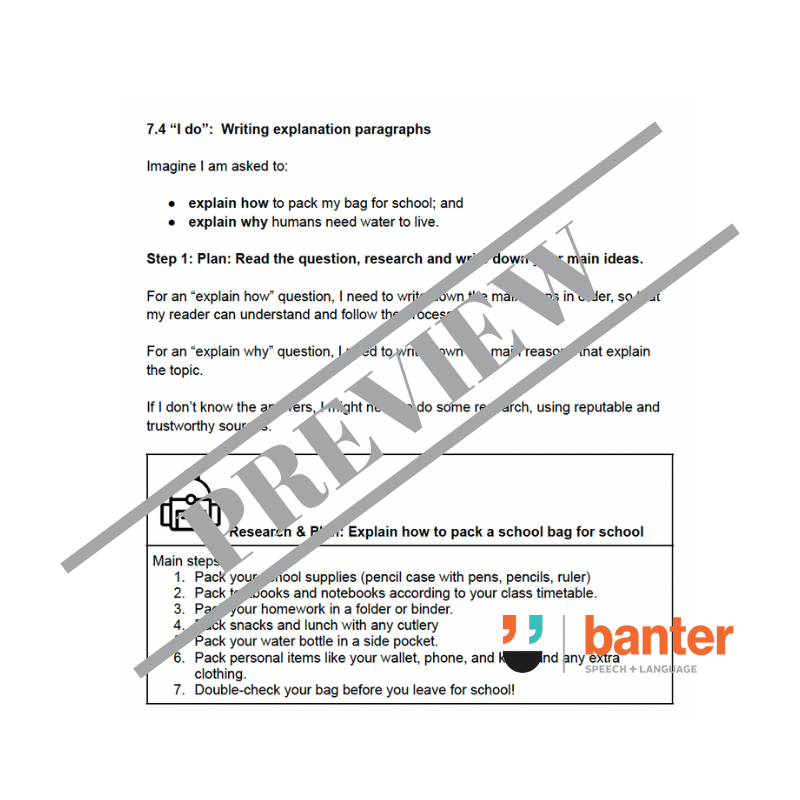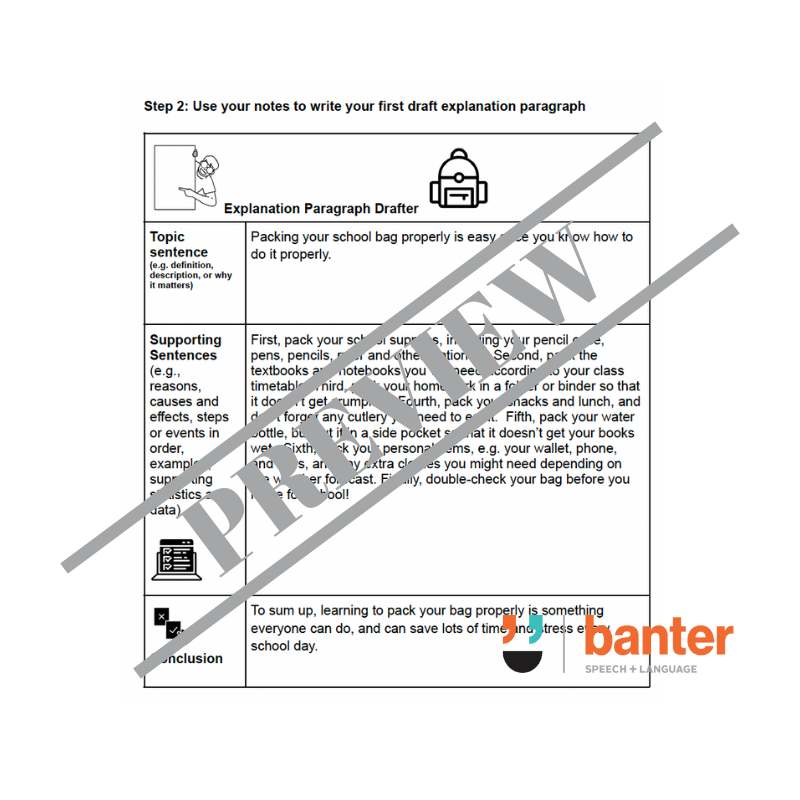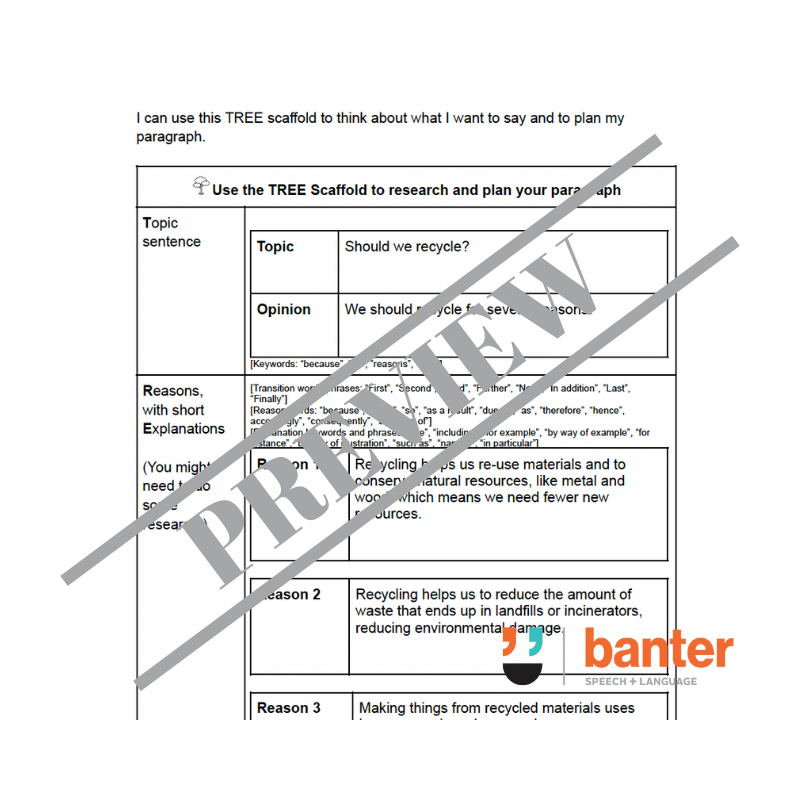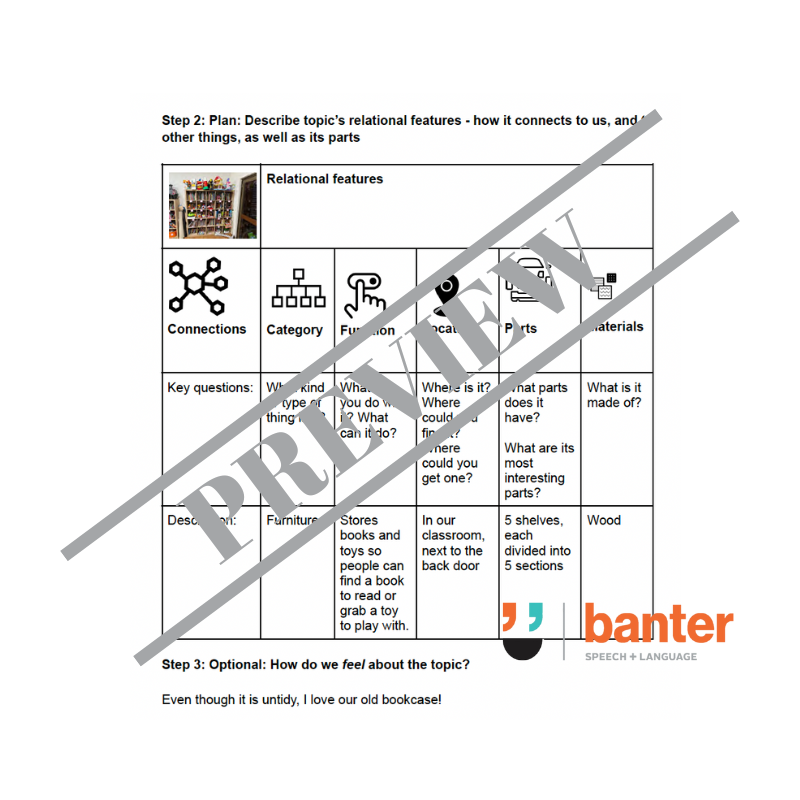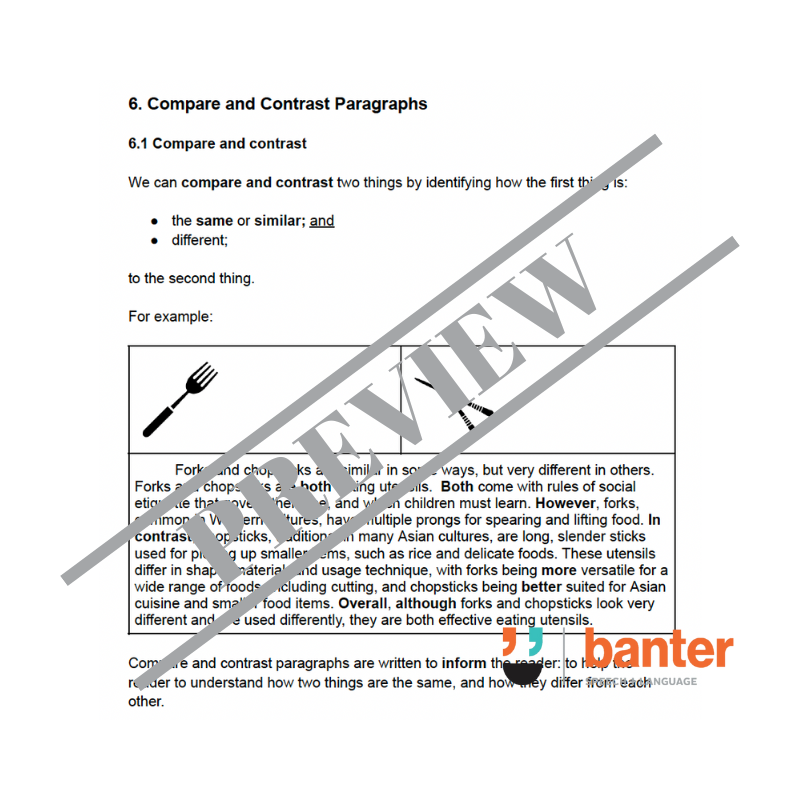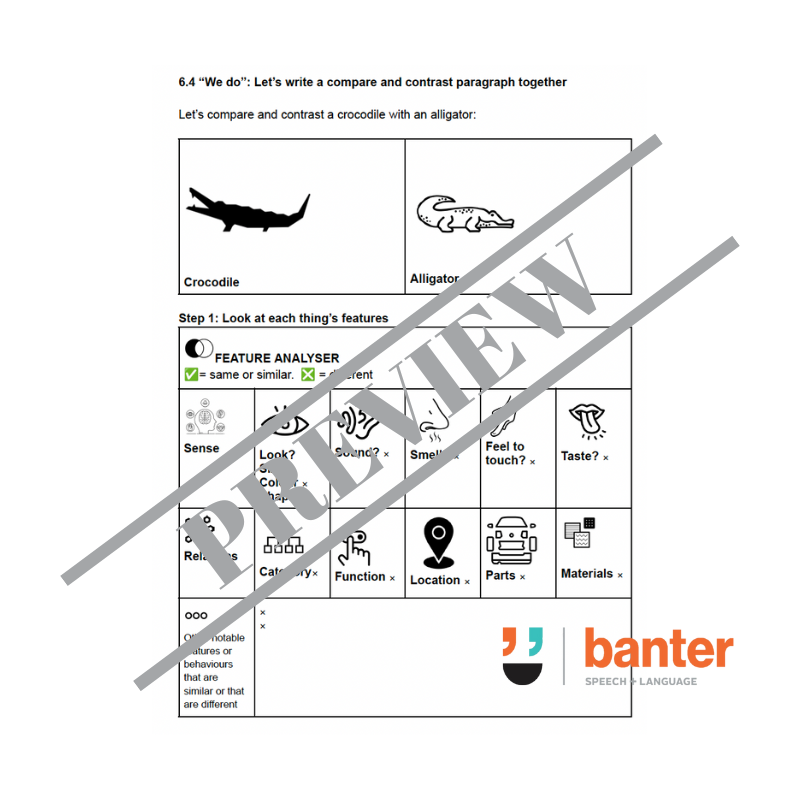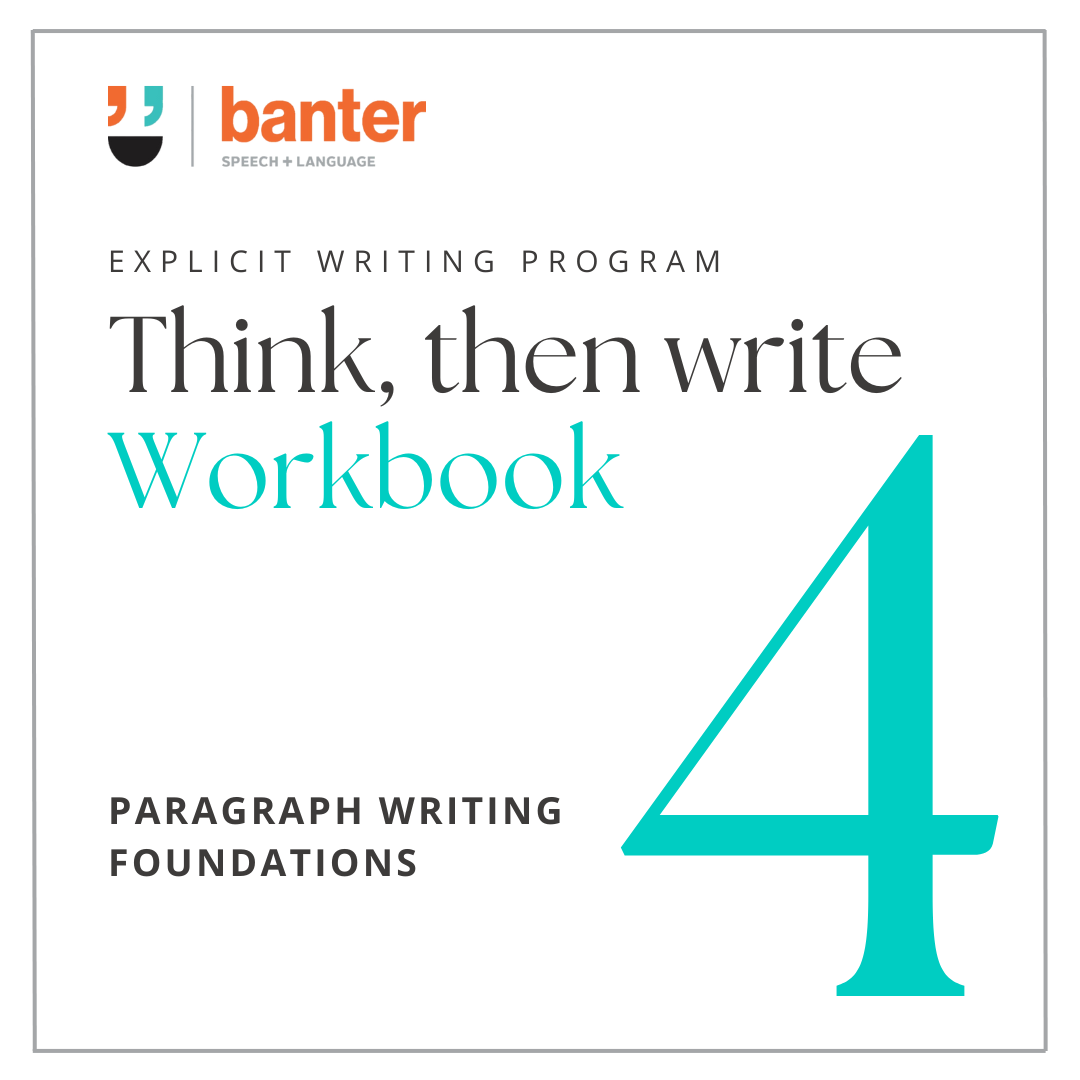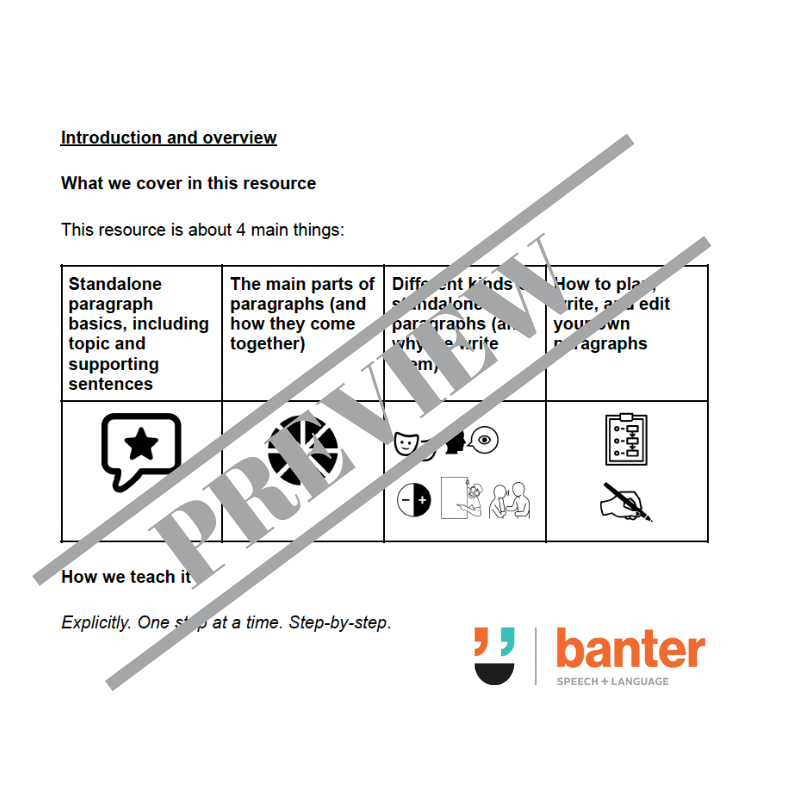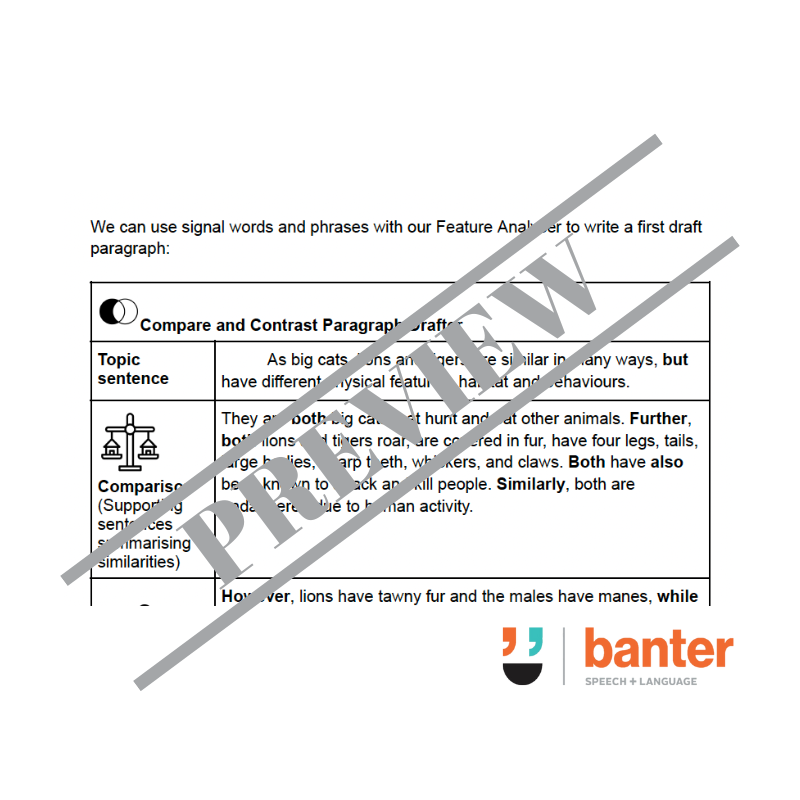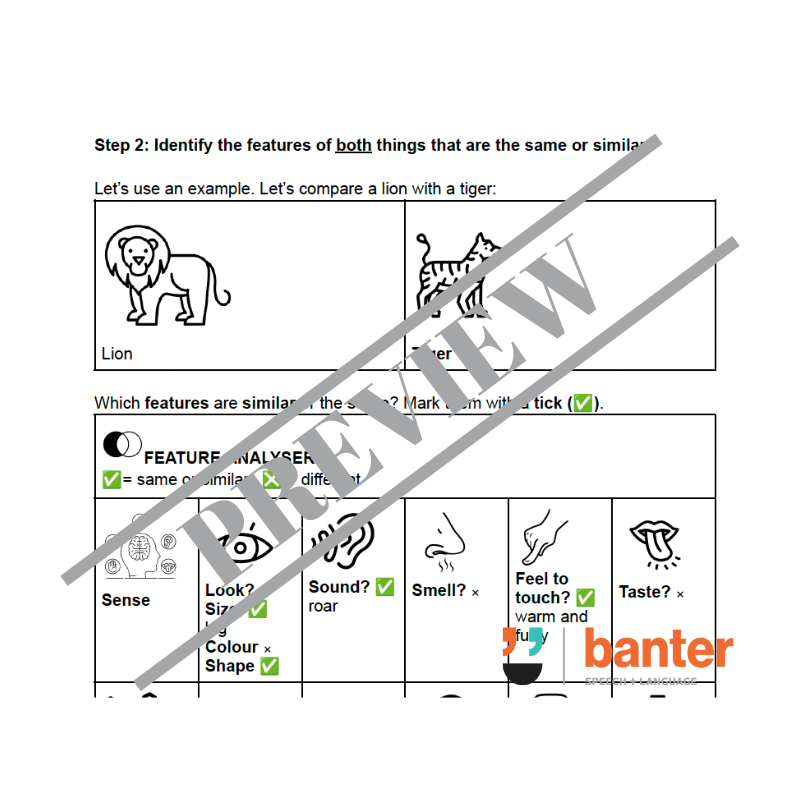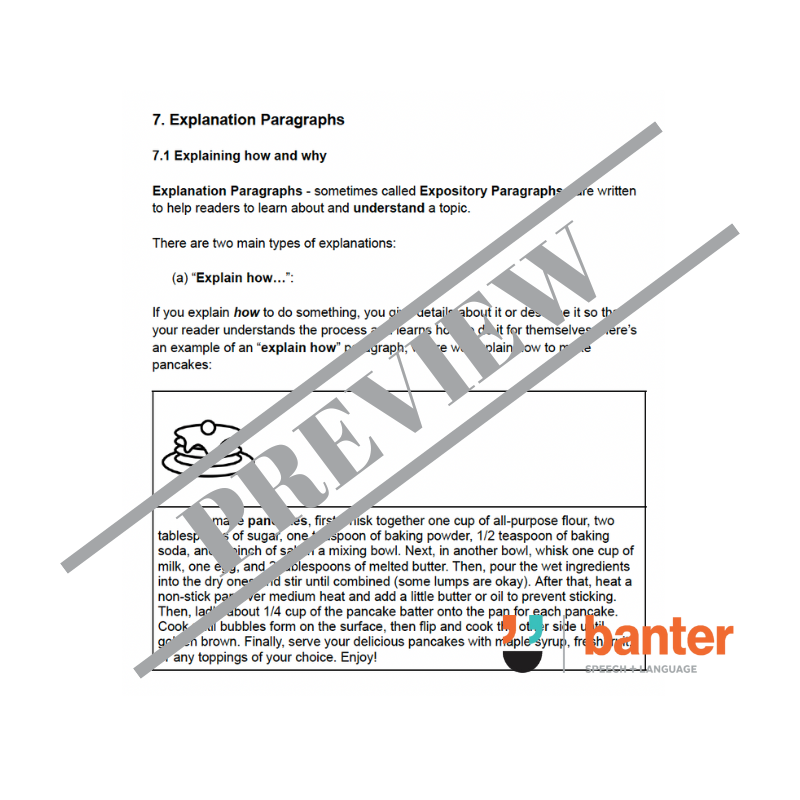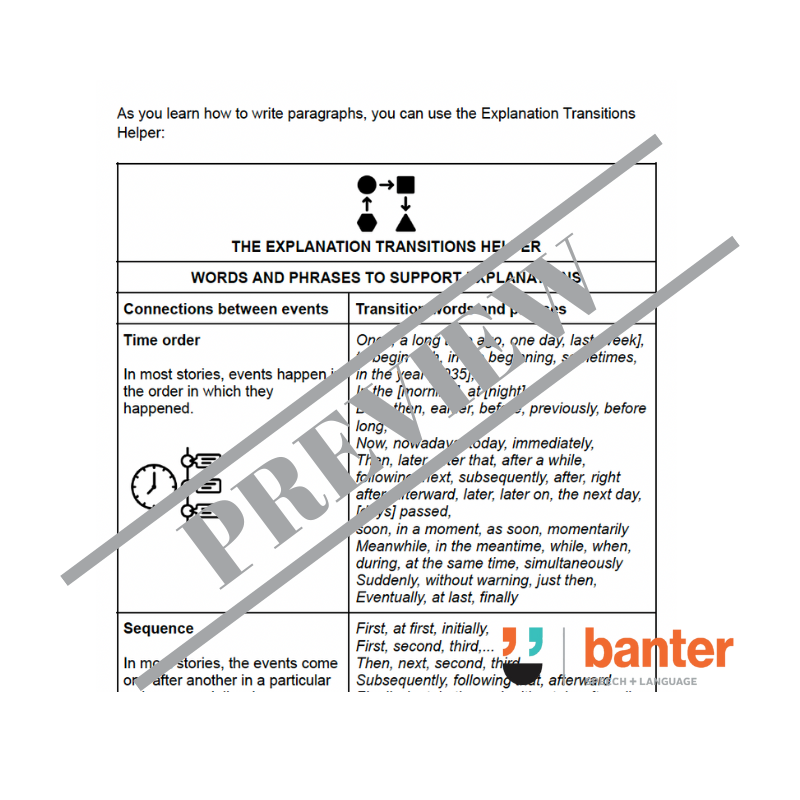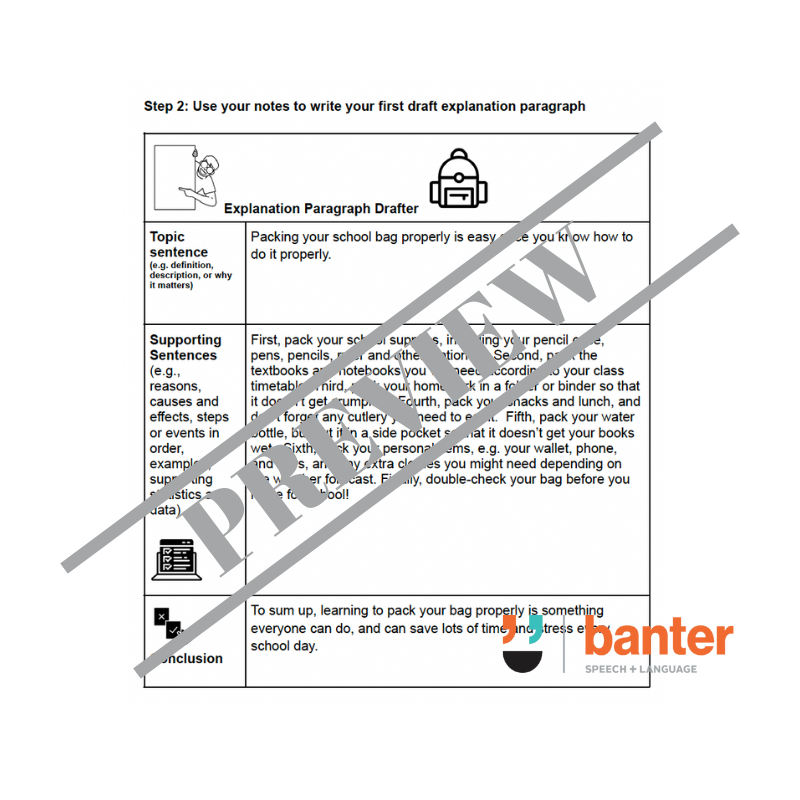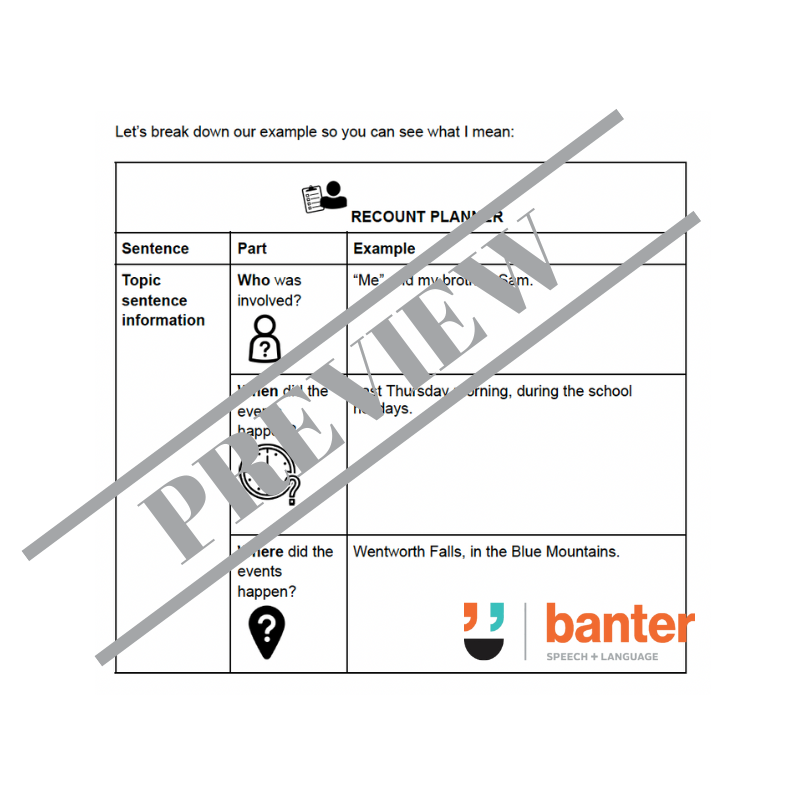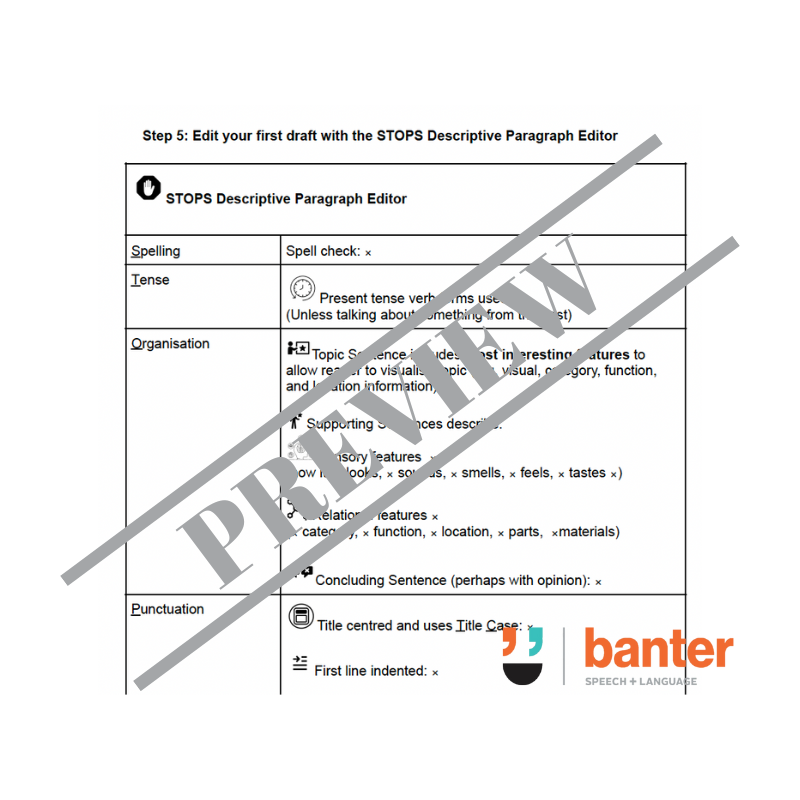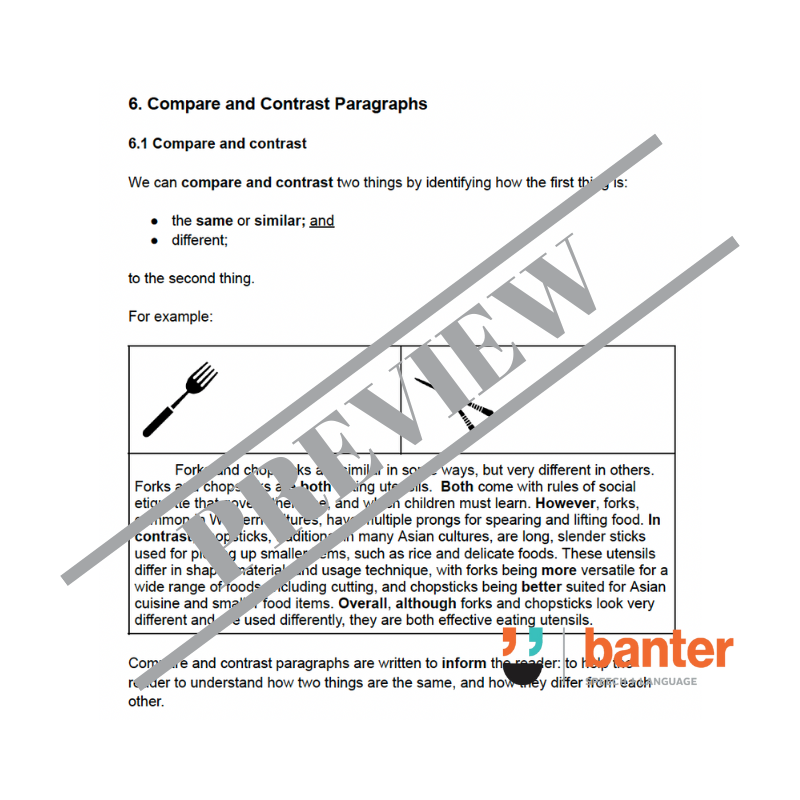Banter Speech & Language
Think Then Write 4: Paragraph Writing Foundations Workbook
Think Then Write 4: Paragraph Writing Foundations Workbook
Couldn't load pickup availability
Think, then Write 4: Paragraph Writing Foundations - a step-by-step, illustrated, fully-scripted, and scaffolded guide to help students learn the basics of writing single-paragraph texts (2nd edition)
What we cover in this resource
Our 150-page plain English workbook includes modules for narrative paragraphs, descriptive paragraphs, compare-and-contrast paragraphs, explanation (expository) paragraphs, and persuasive paragraphs.
How we teach it
1. First, we define the word “paragraph”, and explain what we mean by a “topic” and a “standalone paragraph”.
2. Second, we look at the main parts of a standalone paragraph, including a topic sentence, supporting sentences and a concluding sentence.
3. Third, we look at the different reasons people write paragraphs, including to entertain, describe, compare and contrast, explain, and persuade. We introduce and define narrative, descriptive, compare and contrast, explanation (expository) and persuasive paragraphs.
4. Fourth, we focus on how to write a narrative paragraph, focusing on writing single paragraph recounts.
5. Fifth, we focus on writing descriptive paragraphs using semantic features and characteristics.
6. Sixth, we teach how to write paragraphs that compare and contrast items, again using semantic features and characteristics.
7. Seventh, we teach how to write explanatory (or expository) paragraphs to answer “explain how” and “explain why” questions.
8. Eighth, we teach how to write persuasive paragraphs to express opinions supported by evidence.
9. For each of sections 4-8, we show that paragraph writing is a learnable skill. We introduce evidence-informed writing scaffolds to make planning and writing paragraphs easier. For each kind of paragraph we include a:
- planning scaffold;
- first draft scaffold;
- transitions helper to help connect the ideas and sentences;
- editing scaffold to self-edit the first draft; and
- a final draft writing scaffold.
We teach the skill step-by step:
- “I do”: I make up a paragraph, step-by-step, so the student can see exactly how it is done.
- “We do”: the student does one together with me or an adult using the scaffolds provided.
- “You do”: It’s the student's turn to write their own paragraph, using the scaffolds provided.
10. Ninth, we provide some key references for further reading, and preview the next volumes of our Think, then Write resources, which teach how to write multi-paragraph reports, stories and essays.
Share




